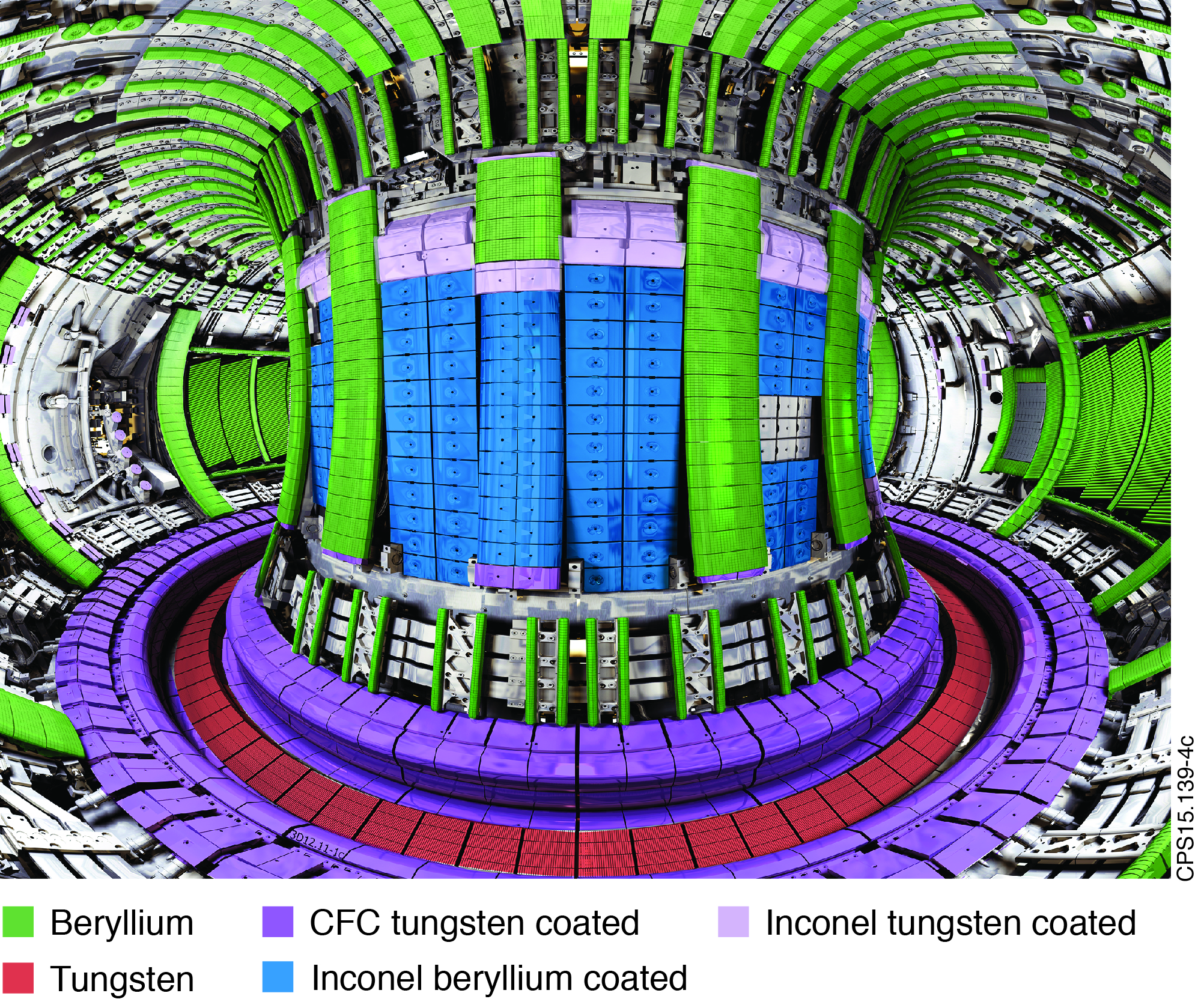Science Series about Fusion: Part 2- Hardships and achievements
.png)
Hello new-found fusion aficionados and welcome to my second part of my Science series on Fusion. If you have missed the first part, you should probably have a read so you are up to speed and so we are all on the same page.
Before I continue I would like to explain a debatable statement I made in the first part:
"Fusion reaction as a power source is completely clean and its effect on the environment is zero!"
As you will see this statement is not entirely correct if you take it literally. There are some effects of the reactor on the environment like radioactive tritium retained in the walls and radioactive activation of the walls of the reactor. I will get to them later in the post. I will also try to convince you that these effects are negligeble, which pretty much is science talk for zero.
Now we can get started!
.png)
Usually it is very effective to mimic nature when trying to solve a problem that has already been solved by it. So to succesfully implement fusion as a power source, scientists have looked to the only place were fusion is constantly occuring. The stars!
Stars are huge objects in space which are made mostly out of hydrogen. Because of their enormous size and weight the temperature in a stars core reaches up to a couple of millions of degrees. This high temperature equates to energies of hydrogen atoms which are sufficient for fusion to occur. Normally fusion at low temperatures does not occur because nuclei are positively charged and repel each other. But the energy of the hydrogen cores (protons) in stars are large enough so they can easily break through this repelling force and fuse!
The probability of fusing two nuclei can be represented by a quantity named the cross-section. You can think of it as a physical size of the particles in meter squared. The larger the particle the easier it is to hit another particle. We can see this quantity as a function of energies of the particles in Figure 1. These energies can be understood as equivalent to temperature.

The cross-section for fusion to occur between different particles as a function of energy of the particles. Taken from [1].
We see that the highest probability for fusion at the lowest temperature is if we try to fuse Tritium and Deuterium so this is our fuel of choice. To succesfully ignite the fusion reaction we still have to heat the particles up to about 100 million degrees K. At such temperatures the gas is in a state called plasma.
Because the walls of our reactor have to be very cold compared to the center of our reactor we will get "winds" that blow the plasma from the center to the wall. This produces stress on the wall which is equivalent to a NASA space shuttle entering the atmosphere!
Furthemore our tritium is radioactive. It gets trapped in the walls of the reactor where it decays. Also the neutrons that are produced in this particular fusion reaction hit the walls and activate it, which is a word for making it radioactive.
So these are the tough issues we face, mainly:
- High stress to the wall because of plasma "wind"
- Radioactive tritium in the wall and activated walls because of neutrons. This makes the handling of the reactor more complicated
There are other problems but I will focus on these two as they are in my opinion the most important.
The neutron activation can be mitigated by picking wall materials that do not become radioactive under neutron bombardement, and the amount of tritium that is captured can be lessened if we pick materials which do not hold a lot of tritium.
.png)
The most researched and established reactor type is the Tokamak. It was designed by the Russians in the time of the Cold War. Because the importance of fusion was well recognized on both sized both parties soon entered a collaboration to develop a working prototype.
This collaboration has since been renamed ITER (International Thermonuclear Experimental Reactor) and has been joined by many oter great nations. An actual tokamak is currently under construction in Cadarache, France. It is expected that the first plasma will be achieved in about 10 years. This tokamak, which we see in Figure 2, will only work as a proof-of-concept and will be followed by an actual commerical reactor named DEMO.

A model of the ITER tokamak. Also the materials on the different parts of the reactor are denominated in different colours. Taken from [2]
At the heart of every tokamak are the magnetic coils which shape the magnetic field inside the reactor so it matches the shape of the tokamak vacuum vessel. Because the plasma is charged it must follow the magnetic lines. In this way the thermal stress of the plasma hitting the wall is severely diminished.
Neutrons, unfortunatelly, are not charged and can not be controlled in such a way. To battle the neutrons we have to pick materials like tungsten and beryllium which do not get radioactive with long decay times after neutron exposure. Furthemore both these materials show very little tritium held in them and also perform well under high temperatures.
The before mentioned "wind" in the plasma makes various instabilities in the plasma which in turn forces plasma to the walls despite strong magnetic fields that contain it. To solve this we force the plasma to hit the wall in a narrow region that can handle the stress which we call a divertor, by properly curving the magnetic lines. This is region is shown in red in Figure 2. It will be fully coated in tungsten which currently shows the best behaviour in such conditions.

Despite our best efforts there are still problems that must be solved. One of the outstanding problems is tritium retention in the walls that gets hit by the plasma. Eventhough this retention is small in tungsten compared to other materials it is still too large when considering it for future commercial reactors that have to run for a long long time.
This means we must be able to either clean the material of the pesky tritium or we must be able to minimize it further by knowing the relevant physics behind the tritium retention. The interested reader can read more about various cleaning techniques in the article by V. Phillips et al. [3]. I will be focused on the knowing-of-physics part which I will explain more in the next part of the Science Series on Fusion.

This is my second part of my science series on fusion. I hope I convinced you that fusion has very little impact on the environment if we pick correct materials and use the correct design of the reactor, as we can minimize the radiation comning from the trapped particles in the walls of the reactor. Additionally the trapped particles decay very fast compared to uranium!
In my next part I will be talking about the plasma-wall interaction and why it is important for the design of future fusion reactors.
If you like the content please upvote and follow me for future content. For more information on me or this series you can check the announcement of this series and the first part. If you want to know more about me you can check my introduction post.
Images are linked to their sources in their description and references are stated within the text.

Big thanks to @steemstem for allowing me to use their tag, name and banner in the following series. SteemSTEM is a community driven project which seeks to promote well written/informative Science Technology Engineering and Mathematics postings on Steemit. For more information on the SteemSTEM project join their steemit.chat.
Thanks a lot for having accounted for my complains to which you don't agree. I appreciate it :)
This post is once again very clear and very pleasant to read. This time, I don't have anything more to say, exceopt that I am looking forward to read the 3rd opus :)
He's good..
Yes he is.
Thank you. I thought it was appropriate to mention the dilemma we had about my last post and try to explain why I did what I did.
I hope the post was clear enough even for people who are not very well-versed in physics, because that is the whole point of this. To bring fusion closer to the people.
For this, you may need to investigate the other comments (unfortunately, not too many :( )
This was a pretty powerful one... Getting to learn about fusion and reactors and all...
At some point, I did feel like I'd be needing a jotter for it..
Good one bro, once again, you've shown you know what you're doing!
Steem on!
Hahahahahhaa. I will send you a pen to Nigeria. :D
Please do 😉
Following.
Hello, can I copy your banner and information about steemSTEM in my posts? It's written quite neatly :)
OK I see now it's an official description in the logo post ;)
I pretty much copied it with some minor changes, so you are free to use it, also!